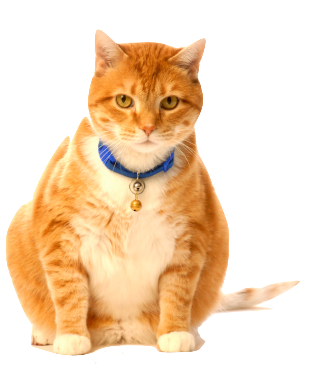Blog
Kittenhood Obesity
November 24, 2014

Will the First Lady help fight kittenhood obesity?
With an unusually busy kitten season in the Seattle area, we’ve had the opportunity to examine many young cats this summer and fall. This is definitely one of the fun parts of the job! Because several visits are needed for most kittens to provide vaccinations, deworming, and other preventative care, we are also able to track their physical development. It is not uncommon to see kittens who are gaining weight and excess body fat too rapidly, which could increase their risk for digestive disorders and chronic obesity later in life.
It is a myth that kittens should be fed as much as they want to eat (i.e., “ad-lib” feeding). After weaning, which usually happens between 5-8 weeks of age, a kitten accommodates to intermittent feeding. Easy access to food and overeating are common factors contributing to juvenile feline flatulence and diarrhea (scientific articles refer to it as “gluttony”). Cat food manufacturers are also too generous with feeding recommendations, often indicating that a kitten should be fed 50-100% more calories than the typical growing cat actually needs.
I use a pretty simple guide when evaluating a kitten’s weight over time: for the first 6 months of life, I expect about 1 lb. of body weight gained per month, which should then slow to about ½ lb. per month for the next 3-6 months. Of course, there is variation in body size, but I worry when I see any 5 or 6-month-old kitten that already weighs 9 lbs. A kitten at this weight often already has excessive abdominal and subcutaneous fat stores, and we all know from our own weight management that once fat cells are established in the body, they will always be there and will always want to fill up.
Since we won’t be getting any federal assistance with this problem, here’s what we can do:
- Ab lib feeding should be stopped by 12 weeks of age unless your kitten is underweight
- Limit access to dry food, which can promote excess body fat
- Do not feed more than 6 ounces of canned food per day unless otherwise directed
- Scheduling periodic weight checks is extremely helpful
- Remember that it is totally normal for a juvenile cat to act “hungry” all the time. This is more a reflection of the intense predatory drive at this age rather than a physical need for calories.
According to Dr. Sharon Center, faculty of the veterinary school at Cornell University and feline obesity researcher, the goal is to have a very fit feline at 12 months of age, as her or his weight at this age will often be the optimal weight for the rest of her or his life.



